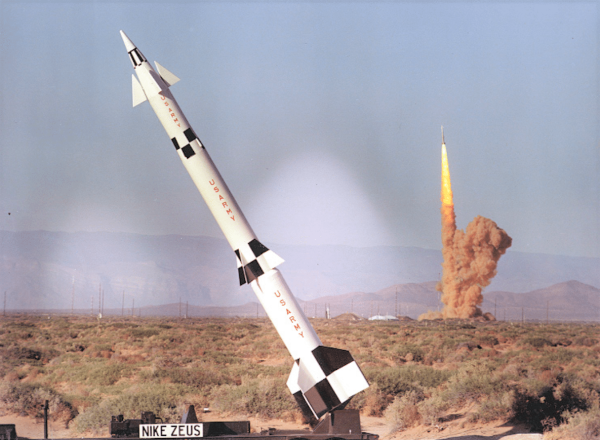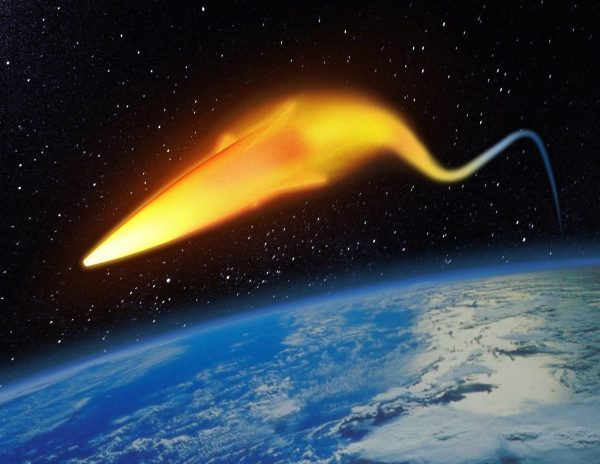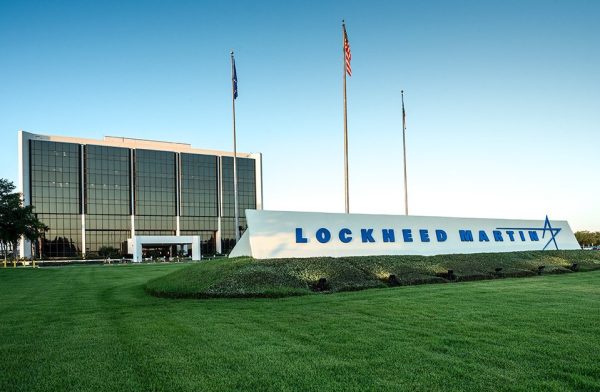I consider the pursuit of comprehensive national defense against nuclear missile attack to be what Paul Krugman calls a “zombie idea,” an idea that refuses to die despite being refuted by evidence. Now that Trump has declared his wish to construct such a system, which he calls a “Golden Dome,” it is appropriate to examine this zombie idea again.
Not as easy as it looks
History of a Dream
Japanese kamikaze planes were effectively the first guided missiles used in warfare. The serious losses they inflicted in WWII caused the U.S. Navy to rush proximity fuses for anti-aircraft artillery into production. When engineers told the Navy that the defect rate would be around 50%, the Navy was satisfied because they would still shoot down many more planes than conventional shells. With the advent of aircraft-delivered nuclear bombs, guided anti-aircraft missiles were developed and deployed by the U.S. on a large scale. When the intercontinental ballistic missile became the main nuclear threat, work began on applying interceptor missile technology to defend against nuclear missiles. Here is the timeline of this effort from the start of the Cold War to the present.
1950s – Early Concepts and Projects
• 1955: The U.S. Army initiates the Nike-Zeus project, an early effort to create a missile that could intercept incoming Soviet ICBMs (Intercontinental Ballistic Missiles).
• 1958: Formation of the Advanced Research Projects Agency (ARPA), later known as DARPA, to explore missile defense technologies.
1960s – First Generation Systems
• 1962: The Nike-Zeus system successfully intercepts a test missile, but concerns about cost and effectiveness prevent full deployment.
• 1967: The Sentinel program begins under President Johnson, aiming to defend cities from limited attacks, like those from China.

Nike-Zeus: the god that failed
1970s – Shift to Site-Specific Defense
• 1972: The Anti-Ballistic Missile (ABM) Treaty is signed between the U.S. and the Soviet Union, limiting both countries to two ABM sites each (later reduced to one).
• 1974: The Safeguard system is briefly deployed in North Dakota to protect a Minuteman ICBM base but is shut down after one year due to high costs and questionable effectiveness.
1980s – Strategic Defense Initiative (SDI)
• 1983: President Ronald Reagan announces the Strategic Defense Initiative (SDI) — often nicknamed “Star Wars” — proposing a space-based missile defense shield using lasers and other advanced technologies.
• 1987: The U.S. demonstrates the Homing Overlay Experiment, proving that a kinetic interceptor can physically hit a missile.

The shield that never was
1990s – Theater Missile Defense and National Missile Defense
• 1991: The Patriot missile system gains public attention during the Gulf War by intercepting Iraqi Scud missiles.
• 1993: SDI is renamed the Ballistic Missile Defense Organization (BMDO), with a renewed focus on theater and regional missile defense rather than a global shield.
• 1998: The Rumsfeld Commission warns that rogue states could develop ICBMs faster than previously estimated, prompting a push for national defense.
2000s – Ground-Based Midcourse Defense (GMD)
• 2001: President George W. Bush announces the U.S. will withdraw from the ABM Treaty, citing the need for more flexible missile defense systems.
• 2004: The U.S. deploys its first Ground-Based Midcourse Defense (GMD) interceptors in Alaska and California, designed to counter limited ICBM attacks from North Korea or Iran.
2010s – Aegis and THAAD Expansion
• 2012: The Aegis Ballistic Missile Defense system becomes operational on Navy ships, capable of intercepting short to intermediate-range missiles.
• 2016: Aegis Ashore land-based missile system deployed to Romania
• 2017: The Terminal High Altitude Area Defense (THAAD) system is deployed to South Korea in response to North Korean missile tests.
• 2017: GMD successfully intercepts an ICBM-class target for the first time in a test.
2020s – Modern Developments and Next-Generation Systems
• 2020: The Next Generation Interceptor (NGI) program begins, aiming to replace older GMD interceptors with more advanced technology by the 2030s.
• 2023: The Pentagon continues research into hypersonic missile defense, directed energy weapons, and space-based sensors as new threats emerge, including hypersonic glide vehicles and maneuvering warheads.
• 2025 President Trump announces decision to build a “golden dome” national missile defense system
All of this has been very expensive, and there has been little to show for it. Total estimated expenditures on missile defense since 1955 are in the range of $350 to $400 billion. The U.S. has deployed a small number of GMD interceptor missiles in Alaska and California. The missiles at these sites have shown only about a 50% successful intercept rate in testing, and these tests were against targets on known trajectories without realistic decoys. The feeble results are justified by claiming that the missiles are a defense against “rogue states” lacking the ability to deploy countermeasures. Experts like Ted Postol of M.I.T. have pointed out that warhead decoy countermeasures are well within the capabilities of any nation capable of building an ICBM. After decades of costly effort, there remain four sets of problems preventing realization of the missile defense dream.

GMD Interceptor: the wrong stuff
Attacker Advantage Problems
There is a fundamental asymmetry issue in missile defense. In general, the attacker is favored because of the factors of surprise and concentration. The defender must always be ready everywhere. The attacker can choose the time, place, and number of missiles for an attack. This makes defense intrinsically more costly than offense in a missile conflict. Moreover, the defender’s costs increase in proportion to the area that must be defended.
This issue was recognized as early as 1958, when the Chief Scientist of ARPA, Herbert York, released a report on missile defense in which he rendered this verdict:
The problem here is the usual problem between defense and offenses, measures, countermeasures, counter-counter measures, et cetera, in which it has been my judgment and still is that the battle is so heavily weighted in favor of the offense that it is hopeless against a determined offense …
In the case of a nuclear attack, there is the additional heavy burden for the defender of achieving an almost perfect kill ratio. A single missed target could result in the destruction of an entire city. To achieve this high degree of efficacy, elaborate and redundant detection and interception capabilities must be developed and implemented. Fielding highly reliable, powerful, and precise interceptor weapons in large numbers, together with a vast array of missile detection and tracking units is a daunting undertaking that has yet be accomplished.
Technical Problems
Destroying an incoming missile warhead is a very tough technical problem. Unlike military aircraft, which are relatively large, slow and fragile, a missile warhead is small, very fast, and hardened to survive re-entry into the atmosphere. Each of the three phases of ICBM flight, boost, mid-course, and re-entry, poses great difficulties for the defender. In the boost phase, right after missile launch, the missile is easily detectable from space, but its location may be thousands of miles out of range of available interceptors. In the mid-course phase, outside the atmosphere, there is no reliable means of distinguishing between the warhead and accompanying decoys. In the terminal phase, inside the atmosphere, there is very little time to intercept, as little as 30 seconds for a hypersonic warhead, which may be maneuvering and is surrounded by a plasma cloud making radar and thermal targeting problematic.

Incoming
Cost Problems
Based on the history of past BMD programs, the total development and deployment cost of a comprehensive national missile defense for the United States would likely be hundreds of billions of dollars. This is dictated by the high unit cost of the necessary reconnaissance and interceptor components multiplied by the quantity of installations needed to provide national coverage. Such a system would require costly continual maintenance and enhancement to match improving missile attack capabilities of potential adversaries.
Strategic Destabilization Problems
Putting aside the practical objections to achieving an effective defense against nuclear missiles, there is a further potent argument against building such a system: the destabilizing effect on nuclear deterrence. An adversary who believes, rightly or wrongly, that an enemy is about to become impervious to missile attack may view this development as a prelude to a first strike. The logic of this assumption is that a strong missile defense capability can block a retaliatory strike and give victory to the side that launches first. Thus, aggressive pursuit of missile defense will trigger countermeasures that destabilize the strategic balance and aggravate arms racing. We have already seen this process play out. After the U.S. abrogation of the ABM treaty, Russia proceeded to develop a new family of weapons that could penetrate any missile shield currently under development. These included the Avanguard hypersonic maneuvering warhead, the Burevestnik nuclear powered cruise missile, and the Poseidon long-range nuclear-powered torpedo.
The above problems have been documented for many years, and for all these reasons no nation has built an effective shield against nuclear missiles, but the dream persists because of public ignorance, political opportunism, and corporate cupidity.
A Different Kind of Dream
For defense contractors, missile defense is an orgasmic dream. Because the sky is literally not the limit these programs can expand indefinitely, with success always just one more expensive technological breakthrough away. Moreover, since there is no way to thoroughly test the efficacy of a comprehensive missile shield, there can be no effective government oversight of the program. Efforts of adversary nations to counteract the defensive system will propel a perpetual motion machine of engineering measures and countermeasures in an endless quest for strategic superiority. The political appeal of promising security to a fearful public will secure continuing government support. The founder of Revlon once said, “In the factory we make cosmetics; in the store we sell hope.” Hope for protection against nuclear missiles will keep the money flowing to defense contractors.

Cha-ching!
Leaky Domes
Trump’s Golden Dome project is evidence of his supreme indifference to relevant information. The notion that Israel’s rudimentary Iron Dome system could have a vastly more capable counterpart defending the entire USA is highly questionable. In terms of geography, Iron Dome is a short range defense system designed to knock down crude, unguided, artillery rockets. Although Israel also has more capable Arrow and David’s Sling interceptors, these still do not have the range to reach much past Israel’s small territory. Moreover, the last missile attack made by Iran in 2024 demonstrated that Iran’s most advanced missile were able to penetrate Israel’s missile defenses. If these missiles had delivered nuclear warheads, Israel would have been destroyed. The implications for Israel’s future security are ominous.
A Test for Musk
The barrage of criticism recently hurled against Elon Musk includes charges that he is seeking to profit from government contracts. Since an extensive orbital missile tracking system would be a key element of a comprehensive anti-missile shield, we will soon find out if Musk’s engineering integrity will prevail over corporate profit. SpaceX could likely deliver orbital reconnaissance capabilities faster and cheaper than any competitor, but what is the point if the defensive system the reconnaissance is intended to serve cannot effectively defend against missile attack? Musk would be well advised to stay away from this boondoggle.
The Future of a Delusion
With Trump touting the construction of a Golden Dome anti-missile shield, the missile defense zombie is shambling along again. The best we can hope for is confining this zombie to the domain of endless research and development, which will be expensive, but nowhere near the cost of fielding a full-blown (leaky) national missile shield. Meanwhile other nuclear powers will continue to increase the survivability of their offensive arsenals and introduce features to counter any progress made in missile defense, keeping the dream of an impregnable missile shield constantly out of reach, and the gravy train of defense contractor funding rolling along.
Conclusion
The medieval Catholic church in Europe ran a successful racket by selling indulgences promising an express route to heaven. This practice had no biblical foundation, but it was immensely appealing to those seeking a heavenly afterlife. Similarly, defense contractors promising to deliver a missile shield are effectively running a protection racket based on the public’s deep desire for protection from nuclear attack. Irresponsible politicians are happy to secure financial and public support by funding the racketeers. The feasibility, affordability, and strategic suitability of national missile defense are all highly questionable, but these concerns remain powerless against a potent dream. In short, to paraphrase a contemporary song, Trump’s Golden Dome missile defense program will be money for nothing and the risks for free.


